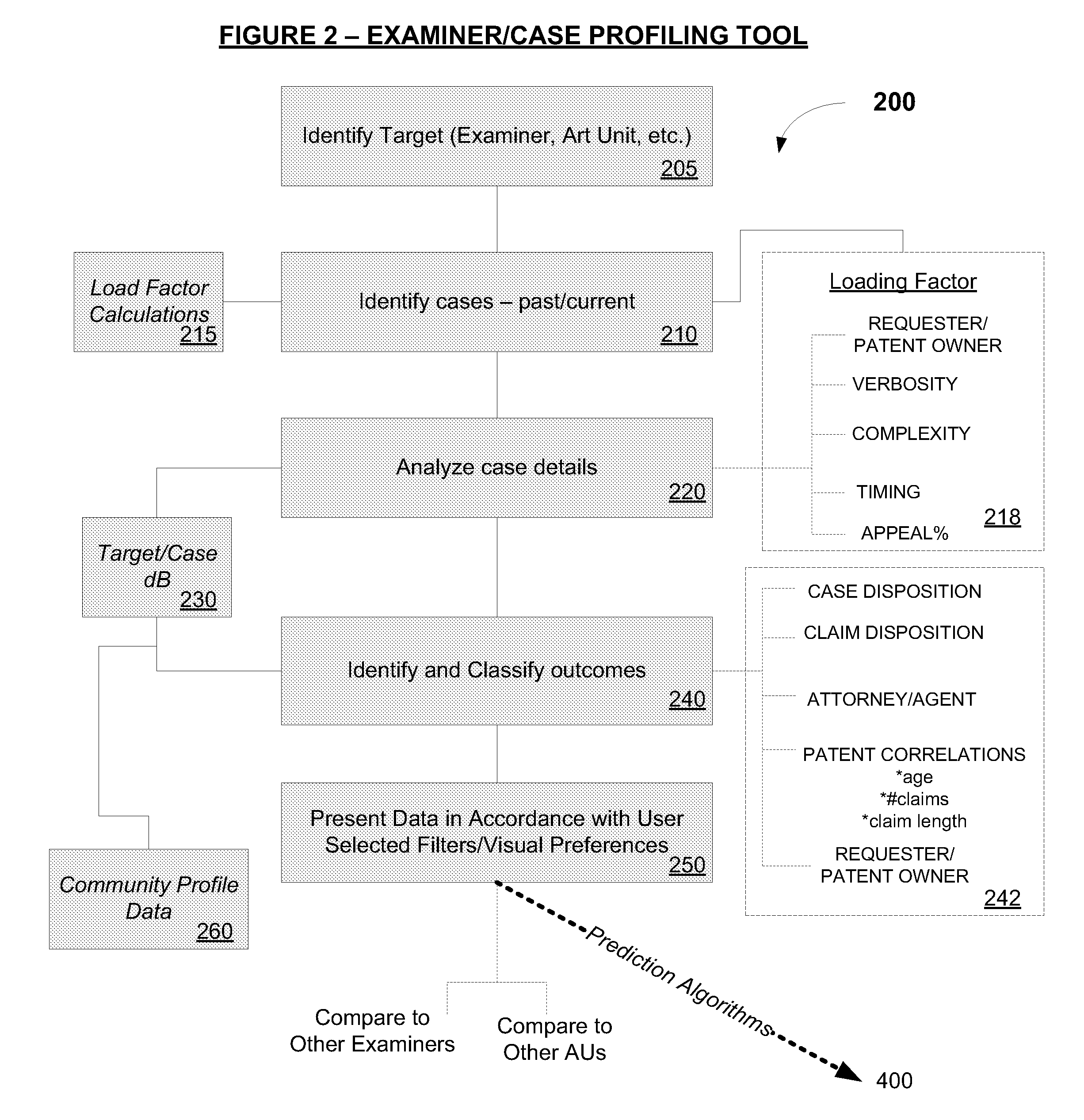System & Method For Facilitating Sequential Review of Restructured Protected Data
a protected data and system technology, applied in the field of automatic electronic system tools and methods for identifying, retrieving and cataloging data, can solve the problems of inability to inspect or review cases, no electronic database accessible to permit the general public to perform conventional search, and no pair system as currently constituted and presented
- Summary
- Abstract
- Description
- Claims
- Application Information
AI Technical Summary
Problems solved by technology
Method used
Image
Examples
example # 1
Example #1
[0152]Group Art Units—the system can provide a prediction of all events expected as output for some or all of a set of cases currently pending across one or all Group Art units. In effect, this can be used to forecast a cumulative output of the target entity within any desired target window.
example # 2
Example #2
[0153]Group Art Units: Alternatively, the system could predict when a future, hypothetical unfiled case would be likely finalized by the target entity. This could be used for planning to evaluate options vis-à-vis using the reexamination process versus a litigation action.
example # 3
Example #3
[0154]Examiner—the system can provide a prediction of all events expected as output for some or all of a set of cases currently pending with an Examiner. In effect, this can be used to forecast a cumulative output of the Examiner within any desired target window.
PUM
 Login to View More
Login to View More Abstract
Description
Claims
Application Information
 Login to View More
Login to View More - R&D
- Intellectual Property
- Life Sciences
- Materials
- Tech Scout
- Unparalleled Data Quality
- Higher Quality Content
- 60% Fewer Hallucinations
Browse by: Latest US Patents, China's latest patents, Technical Efficacy Thesaurus, Application Domain, Technology Topic, Popular Technical Reports.
© 2025 PatSnap. All rights reserved.Legal|Privacy policy|Modern Slavery Act Transparency Statement|Sitemap|About US| Contact US: help@patsnap.com



